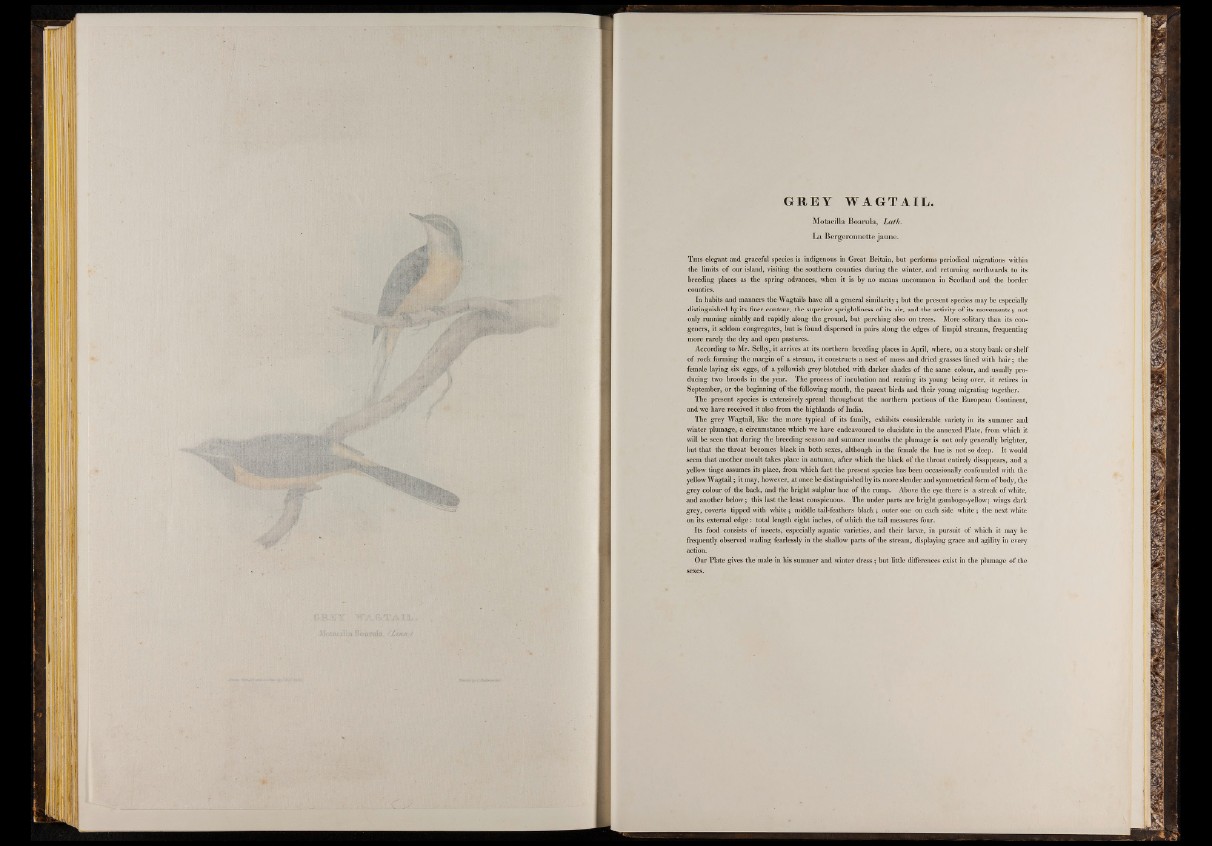
G R E Y WA G T A IL .
Motacilla Boarula, Lath.
La Bergeronnette jaune.
T h is elegant and graceful species is indigenous in Great Britain, but perforins periodical migrations within
the limits of our island, visiting the southern counties during the winter, and returning northwards to its
breeding places as the spring advances, when it is by no means uncommon in Scotland and the border
counties.
In habits and manners the Wagtails have all a general similarity; but the present species may be especially
distinguished by its finer contour, the superior sprightliness of its air, and the activity of its movements; not
only running nimbly and rapidly along the ground, but perching also on trees. More solitary than its congeners,
it seldom congregates, but is found dispersed in pairs along the edges of limpid streams, frequenting
more rarely the dry and open pastures.
According to Mr. Selby, it arrives at its northern breeding places in April, where, on a stony bank or shelf
of rock forming the margin of a stream, it constructs a nest of moss and dried grasses lined with hair; the
female laying six eggs, of a yellowish grey blotched with darker shades of the same colour, and usually producing
two broods in the year. The process of incubation and rearing its young being over, it retires in
September, or the beginning of the following month, the parent birds and their young migrating together.
The present species is extensively spread throughout the northern portions of the European Continent,
and we have received it also from the highlands of India.
The grey Wagtail, like the more typical of its family, exhibits considerable variety in its summer and
winter plumage, a circumstance which we have endeavoured to elucidate in the annexed Plate, from which it
will be seen that during the breeding season and summer months the plumage is not only generally brighter,
but that the throat becomes black in both sexes, although in the female the hue is not so deep. It would
seem that another moult takes place in autumn, after which the black of the throat entirely disappears, and a
yellow tinge assumes its place, from which fact the present species has been occasionally confounded with the
yellow Wagtail; it may, however, at once be distinguished by its more slender and symmetrical form of body, the
grey colour of the back, and the bright sulphur hue of the rump. Above the eye there is a streak of white,
and another below; this last the least conspicuous. The under parts are bright gamboge-yellow; wings dark
grey, coverts tipped with white; middle tail-feathers black; outer one on each side white ; the next white
on its external edge: total length eight inches, of which the tail measures four.
Its food consists of insects, especially aquatic varieties, and their larvae, in pursuit of which it may be
frequently observed wading fearlessly in the shallow parts of the stream, displaying grace and agility in every
action.
Our Plate gives the male in his summer and winter dress; but little differences exist in the plumage of the
sexes.